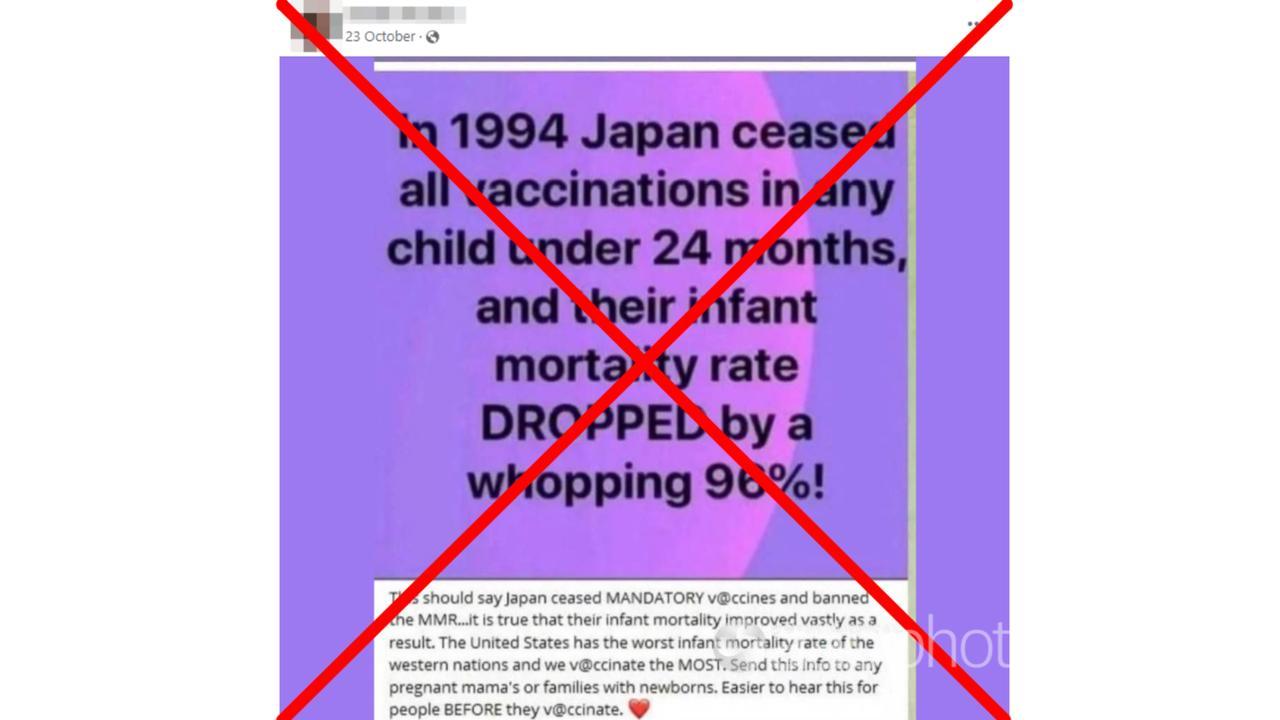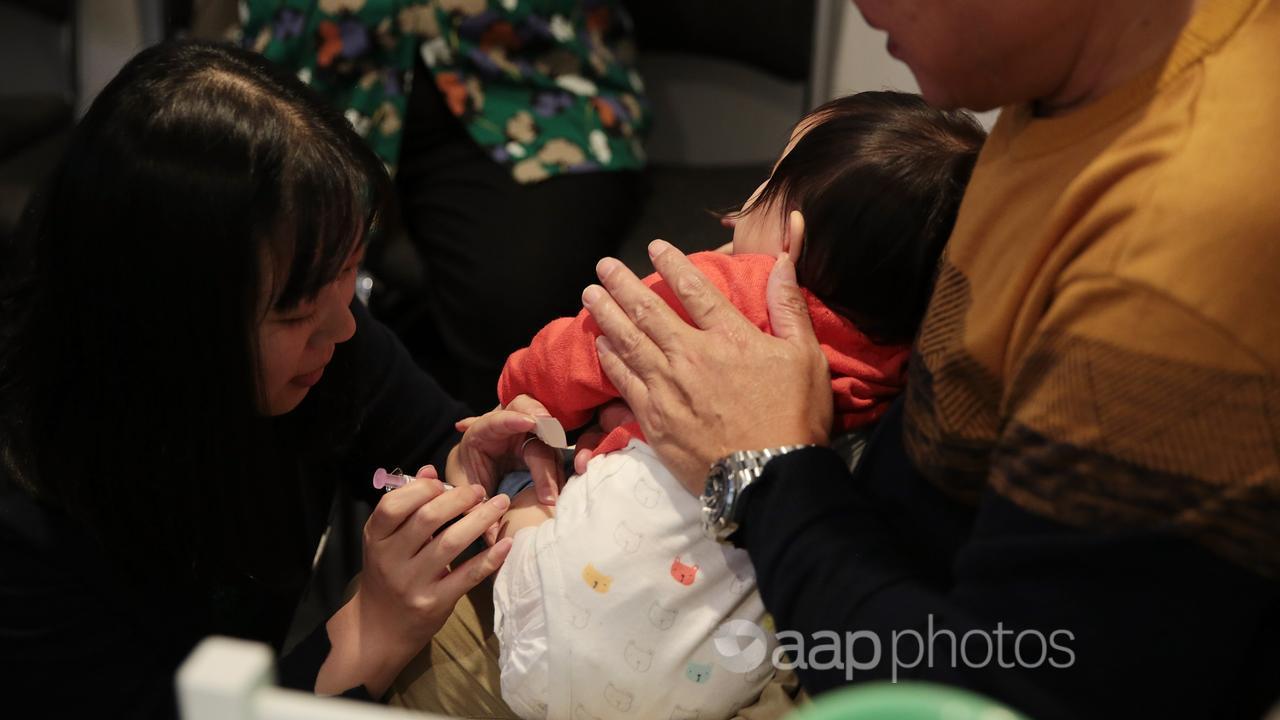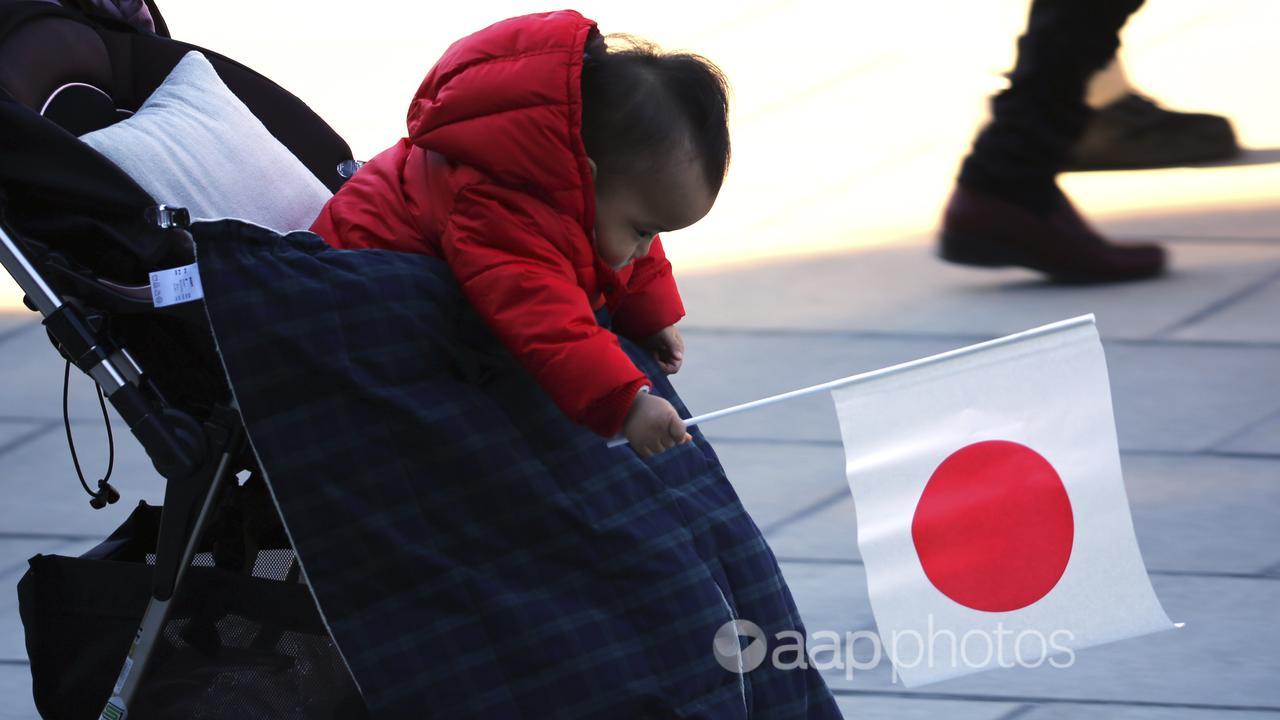Social media posts claim Japan’s infant mortality rate plunged after 1994, when the nation ended all vaccinations for children aged under two.
This is false. An immunisation expert told AAP FactCheck infant mortality in Japan has always been low and data shows it continues to fall as vaccination coverage increases.
The nation has some of the highest child immunisation rates in the world and law changes in 1994 simply made vaccination voluntary, rather than mandatory.
The claim is made in multiple Facebook posts, such as here, here, here and here.
“In 1994 Japan ceased all vaccinations in any child under 24 months, and their infant mortality rate DROPPED by a whopping 96%!” the posts read.
A note added to the post states: “This should say Japan ceased mandatory vaccines and banned the MMR … it is true that their infant mortality improved vastly as a result.”
The note is closer to the truth, but still misleading.

AAP FactCheck has debunked a similar claim and shown that while vaccinations have not been mandatory in Japan since 1994, the nation’s Vaccination Law Act states people “must endeavour” to receive routine vaccination against Class A disease, listing more than 10 including measles, tetanus and polio.
A Japanese academic paper explains the immunisation law was revised in 1994.
The law was launched in 1948 with the goal of decreasing endemic diseases such as smallpox, diphtheria, polio, tetanus, pertussis (whooping cough) and tuberculosis.
The revision changed immunisation from a civic “duty” to an “effort duty”, ending mass immunisation at schools and relying on people getting their children vaccinated individually.
One event which ultimately led to the revision was two fatalities after DTwP (diphtheria, tetanus-toxoid, and whole cell pertussis) vaccination in the mid-1970s.
The vaccine was withheld for six years which led to a resurgence of 13,000 pertussis cases and dozens of deaths reported in 1979.
Sharon Hanley, an immunisation program expert at the University of Aberdeen, told AAP FactCheck infant deaths increased whenever vaccination coverage decreased.
“Infant mortality (in Japan) definitely didn’t decrease because vaccination coverage decreased,” Dr Hanley said.
“Infant mortality has always been low in Japan.”

This is borne out in official OECD data, which shows Japan’s infant mortality rate (the number of deaths of children aged under one year per 1000 live births) has been dropping year on year, from 4.6 in 1990 to 1.7 in 2021.
This coincides with an increase in child vaccination coverage.
A routine vaccine schedule released by Japan’s National Institute of Infectious Diseases states vaccination begins when children are two months old.
The biggest single drop in Japan’s infant mortality, from 4.3 in 1995 to 3.8 in 1996, coincided with an increase in measles vaccination coverage and a big increase in diphtheria, tetanus and pertussis coverage, from 74 per cent to 99 per cent.
The data shows that in 2021, 95.4 per cent of Japanese children around the age of one were vaccinated for measles, and 98.8 per cent around age one were vaccinated for diphtheria, tetanus and pertussis.
Japan’s immunisation program has continued to expand.
A 2014 academic paper on progress in the Japanese program shows the nation’s vaccination law underwent another major revision in April 2013 to include three new vaccines – the Hib, PCV7 and HPV vaccines.
A 1993 paper analysed the reasons for Japan’s low infant mortality rate, published before the law’s revision in 1994.
It suggested a range of reasons why Japan had the world’s lowest infant mortality rate, including comprehensive use of a child health handbook, universal access to prenatal care and community support.
The Verdict
The claim infant mortality in Japan dropped 96 per cent after vaccines for children aged under 24 months ceased in 1994 is false.
Infant vaccinations didn’t cease, they were made voluntary, but vaccination coverage has steadily increased since 1994, while the mortality rate has steadily dropped.
False — The claim is inaccurate.
AAP FactCheck is an accredited member of the International Fact-Checking Network. To keep up with our latest fact checks, follow us on Facebook, Twitter and Instagram.
All information, text and images included on the AAP Websites is for personal use only and may not be re-written, copied, re-sold or re-distributed, framed, linked, shared onto social media or otherwise used whether for compensation of any kind or not, unless you have the prior written permission of AAP. For more information, please refer to our standard terms and conditions.


















